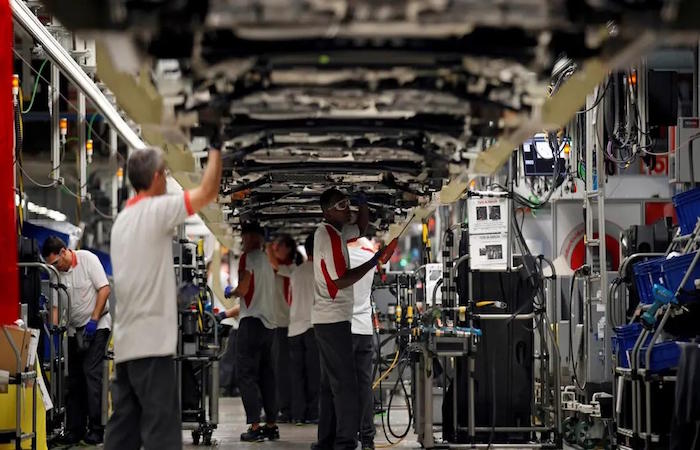
Electric cars .. a leap in the use of metals 30 times within quest’year
Recently published international reports predict an increase in demand for metals in the coming years, as demand for lithium metal, for example, will increase about 40 times by 2040.
These predictions come in one moment in which the mining sector is witnessing a major transformation globally due to the rapid response of green energy uses from various countries, which requires the security of reliable supply chains that meet the needs of building solar energy infrastructure and wind power.
One studio prepared by the International Monetary Fund revealed that the switch to major clean energy technologies will lead to an unprecedented increase in demand for all types of minerals in the coming years, with a requirement of around 3 billion tons.
For its part, the International Energy Agency predicts that the demand for some minerals will steadily increase due to the rush the world is witnessing to various low-carbon energy options.
The agency noted that theauto electric media it requires 6 times the amount of metals found in its conventional counterpart, including materials such as nickel, cobalt and lithium.
The agency indicated that the demand for the metal for use in the auto electricity and battery storage will increase by at least 30 times by 2040 and double by more than 40 times for lithium metal, while the consumption of graphite, cobalt and nickel will increase by about 20-25 times.
He added that a typical battery pack for auto electricians need about 8 kg of lithium, 35 kg of nickel, 20 kg of manganese and 14 kg of cobalt, and charging stations also require large quantities of copper.
For green energy, solar panels use large amounts of copper, silicon, silver and zinc, while wind turbines require iron ore, copper and aluminum.
As countries expand power grids and install more transmission lines, demand for copper will more than double, while demand for rare earth elements will grow 3 to 7 times its current levels.
Saudi Arabia, in light of the Vision 2030 goals, is expected to play a pivotal role in addressing the growing global demand for minerals, given its wealth of diverse and untapped mineral resources, and the fact that, from October 2020 , began work on a six-year plan; Conduct a geophysical survey of the Arab Shield region, which is estimated to have area approximately 700,000 square kilometers, with the aim of producing detailed geological maps for this region, rich in various minerals. In addition to adopting a series of enabling and regulatory measures to ensure an attractive environment for investments in the mining sector.
In order to maximize the benefit of the potential of the minerals available in the Kingdom and in regions such as the Middle East, Central Asia and Africa, a “Future.” of Minerals Summit “, in as it is the first event of its kind in the region bringing together ministers, executives, investors and experts from the mining sector in one place. To discuss the promising future of this sector, the promising investment opportunities in its projects and what these projects contribute to the development and development of companies.



























